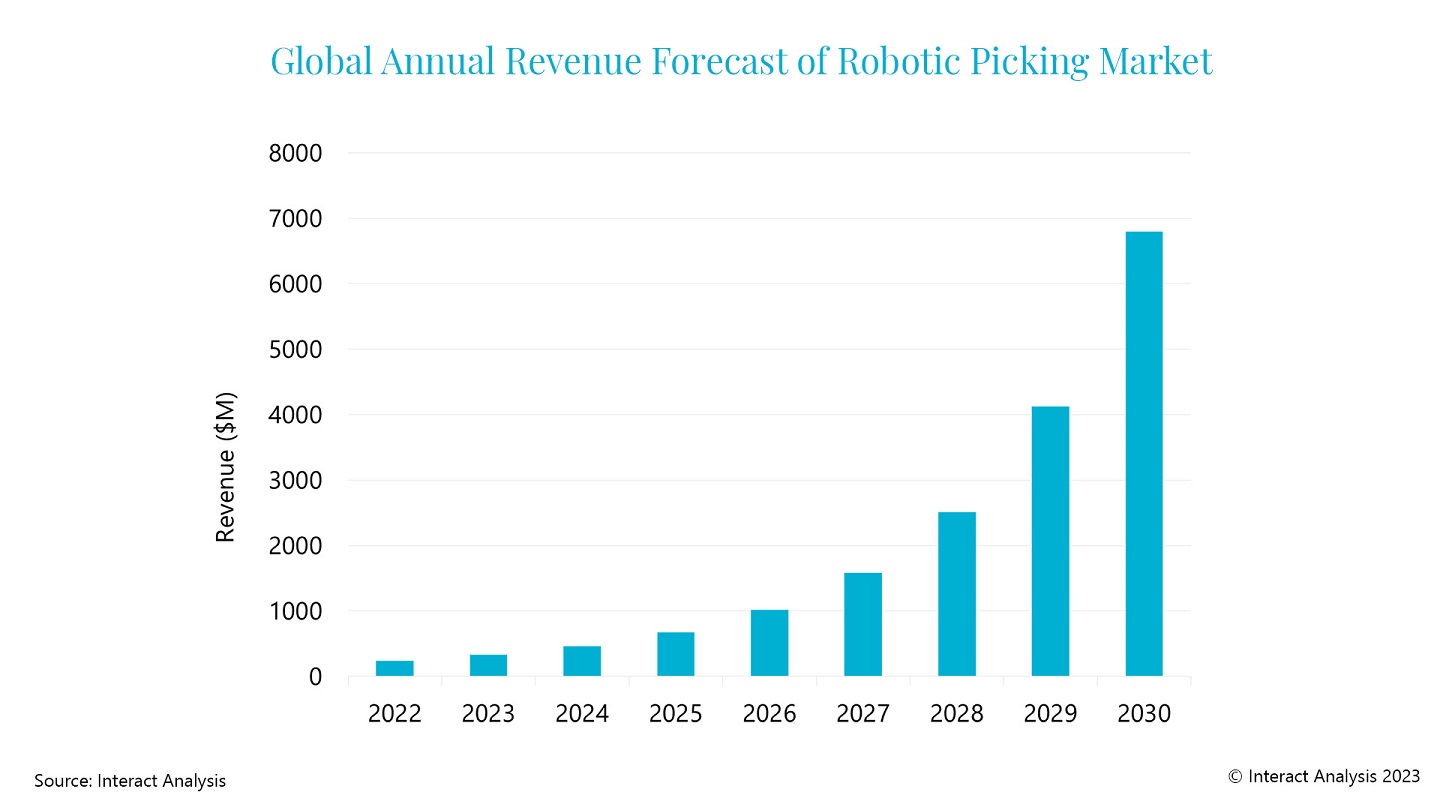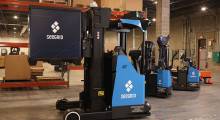New research by Interact Analysis shows the market for robotic picking is in the early stages of growth but presents huge potential. The market was worth $236 million in 2022, but by 2030 this will increase to $6.8 billion.
Rising labor costs and supply chain constraints are likely to be key drivers for the market, as companies turn to automation to relieve operational pressures, the research firm added.
The growth of e-commerce and warehouse automation is also expected to impact the market for robotic picking technology.
There are currently very few suppliers to the robotic picking market and a low installed base, Interact noted. By the end of 2022, Interact Analysis’ research shows there were just 33 suppliers in the market, most of which entered it within the last 5 years.
However, despite the market currently being relatively small, there is huge growth potential for the robotic picking sector, with the increase in warehouse automation set to have a positive impact on the market.
More employees will do static manipulation tasks
In 2022, the number of employees performing static manipulation tasks in warehouses was 4.3 million and by 2030 this figure will reach 7.5 million. This expansion will substantially increase the total addressable market for robotic picking.
There are a number of factors that are influencing the adoption speed of robotic picking technology, the research finds, one of which is shift patterns. Those companies with 2-shift and 3-shift operations have a tendency towards faster adoption rates than those with lower shift patterns as they can significantly reduce labor costs by installing the technology.
E-Commerce driving robotic adoption
The growth of e-commerce is having a huge impact on the market due to the 24/7 nature of its operations, with multiple shifts. Picking robots can work longer hours and achieve a greater number of picks than manual workers at a lower overall cost.
“The market for robotic picking is certainly an exciting and dynamic one,” commented Irene Zhang, senior analyst at Interact Analysis. “The market share landscape is set to look very different in 2030 compared with today due to an influx of new vendors.
The market share can alter considerably from just one supplier being awarded a large project. For example, Boston Dynamic’s $15 million deal with DHL will have a significant impact on its 2023 share of the robotic picking market.”
“The U.S. considerably leads the way for the robotic picking market, and we expect this to continue over our forecast period,” Zhang continued. “This is in part due to the high labor costs faced by US companies. Out of the 33 suppliers that currently serve the robotic picking market, 18 are based in the US. Not to mention, all 18 received a total of $1.4 billion in funding by the end of 2022 – accounting for 60% of global funding in this market.”
Article topics
Email Sign Up
















